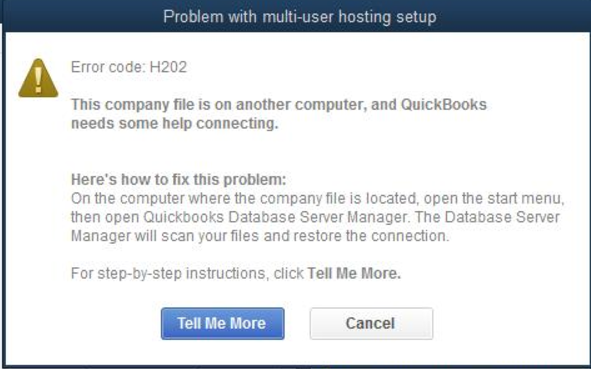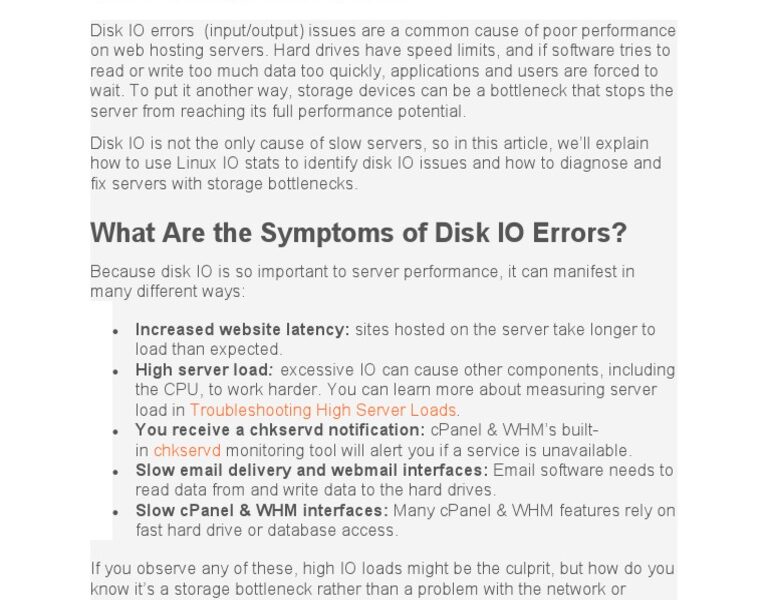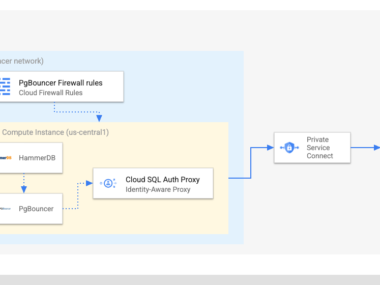Troubleshooting web hosting and database issues typically involves checking server status and reviewing error logs. Begin by verifying your hosting service is active and your database credentials are accurate.
Also Read
Navigating the complexities of web hosting and database management can often lead to unexpected obstacles that hinder website performance. Identifying the root cause of hosting and database issues demands a systematic approach: start with basic connectivity checks, authenticate user permissions, and ensure software compatibility.
An effective procedure frequently includes examining configuration settings, updating necessary components, and optimizing your database for improved efficiency. Site owners should familiarize themselves with their hosting environment and database structure to expedite this process.
Crafting a reliable and efficient website rests on the smooth operation of its hosting and database systems, making timely resolution of any problems paramount to sustaining online presence and user satisfaction.
Common Web Hosting Snags
Setting up a website is thrilling, yet sometimes you hit roadblocks. Web hosting issues are like puzzles waiting to be solved. Let’s discover the usual web hosting snags from connectivity woes to slow pages and pesky permission errors.
Identifying Connectivity Hiccups
Is your site not loading? It could be a connectivity hiccup. Here’s a quick checklist:
- Check your internet connection: Sometimes, the issue is as simple as your own connection.
- Verify server status: Look at your hosting service’s status page for outages.
- Use ping and traceroute tests: These tools verify if the issue is between your device and the website.
Solving Slow Load Times
Slow websites test patience. Speed up with these steps:
- Optimize images: Use smaller image files to boost load time.
- Clean up code: Neat code makes for a swift site.
- Cache content: Caching stores data for faster access.
Permission Errors Explained
Facing Forbidden or Access Denied messages? Permission settings could be the cause. Web files need correct permissions to work properly. Here’s what to look for:
| Error Type | Cause | Solution |
|---|---|---|
403 Forbidden |
Wrong file permissions | Set to 755 for directories, 644 for files. |
500 Internal Server Error |
Script issues | Review the script’s code or permissions. |

Credit: www.hostinger.com
Database Dilemmas Decoded
Database issues can turn a smooth-sailing website into a ship amidst a storm. Web hosting and database problems often go hand-in-hand, causing headaches for webmasters and developers alike.
This section shines a light on common database predicaments-such as login failures, sluggish queries, and data corruption-and provide clear strategies to troubleshoot them effectively. Read on to ensure your website navigates through these challenges with ease.
Tackling Login Failures
Login failures can stop your workflow in its tracks. Follow these steps:
- Check user credentials: Ensure the username and password are correct.
- Verify database server: Confirm if the server is running.
- Review user privileges: Users need the right permissions.
Optimizing Queries For Performance
Slow queries drag your website down. Boost performance by:
- Analyzing query structure.
- Using indexes effectively.
- Limiting data returned.
Tools like EXPLAIN in MySQL, help identify bottlenecks.
Handling Data Corruption
Corruption is a serious issue. Steps to address it:
| Action | Benefit |
|---|---|
| Regular Backups | Quick restoration |
| Check Integrity | Catch issues early |
| Repair Tools | Fix corruption |
Regular maintenance and monitoring are crucial.
Maintenance Best Practices
Keeping your web hosting and database performing flawlessly requires routine maintenance. This involves a combination of updates, backups, and monitoring.
Regular Updates As Preventative Measures
Regular updates are vital. They ensure your website runs smoothly and securely. Here’s what you need to remember:
- Update regularly to patch security vulnerabilities.
- Check for updates on your content management system, plugins, and scripts.
- Use management tools to automate the process.
Backup Strategies For Webmasters
A comprehensive backup strategy is your safety net against data loss. Consider these steps:
- Schedule regular backups – daily, weekly, and monthly.
- Store backups in multiple locations, like on-site, off-site, and in the cloud.
- Test your backups to ensure they can be restored.
Monitoring Tools And Services
Consistent monitoring detects issues before they escalate. Implement these tools:
| Tool/Service | Function |
|---|---|
| Uptime Monitors | Alerts you when your site is down. |
| Performance Trackers | Tracks website speed and user experience. |
| Security Scanners | Scans for vulnerabilities and malware. |
Setting up alerts for abnormal activity keeps you on top of your site’s health.

Credit: www.researchgate.net
Server-side Solutions
Server-Side Solutions play a crucial role in the smooth operation of websites and databases. They ensure your online platform remains accessible and secure. Tackling issues on the server level can dramatically improve your website’s performance and user experience. Let’s explore methods for managing server overloads, configuring security settings, and troubleshooting common server errors.
Managing Server Overloads
When too many users visit your site, the server can get overwhelmed. This leads to slow performance or crashes. Keep your website running smoothly with these strategies:
- Upgrade hosting plans – Switch to higher capacity if traffic has outgrown current plan.
- Optimize databases – Use indexing for faster queries and load reduction.
- Implement caching – Store frequently accessed data to ease server load.
Configuring Security Settings
Securing your server is mandatory to protect data and prevent unauthorized access. Apply these settings to bolster your defenses:
- Firewalls – Set up to block suspicious traffic.
- SSL certificates – Encrypt data between server and users.
- Regular software updates – Patch vulnerabilities with the latest versions.
Troubleshooting Common Server Errors
Glimpse common server errors and their fixes to minimize website downtime:
| Error Code | Description | Quick Fix |
|---|---|---|
500 Internal Server Error |
General server-side error. | Check server logs for specific issues. |
502 Bad Gateway |
Server received invalid response. | Restart server and proxy services. |
504 Gateway Timeout |
Server didn’t respond in time. | Review server load and optimize. |
Optimizing User Experience
Optimizing User Experience is critical for any website’s success. Visitors expect quick, easy-to-use, and functional websites. Ignoring these aspects can lead to frustration and high bounce rates. Factors such as navigation, speed, and mobile-friendliness play a huge role in keeping users engaged. Let’s dive into ways to ensure your site meets user expectations.
Streamlining Navigation Structures
Clear navigation helps users find what they need swiftly and effortlessly. Well-organized menus guide visitors without confusion.
- Bold main categories for visibility.
- Limit items in your menu to avoid overwhelm.
- Use dropdowns for subcategories where relevant.
Implementing Caching For Speed
Fast load times keep users happy. Caching stores website content for quicker access. Implementing this can significantly reduce loading times.
- Use plugins to handle complex caching with ease.
- Set proper cache headers on web assets.
- Verify caching works with tools like GTmetrix.
Responsive Design And Mobile Optimization
A mobile-optimized site adapts to any screen size. This makes your website user-friendly, regardless of the device.
| Aspect | Mobile Optimization Practice |
|---|---|
| Layout | Flexible grids adjust to screen width. |
| Images | Responsive images resize without distortion. |
| Text | Readable font size across devices. |
| Navigation | Collapse into a hamburger menu on small screens. |

Credit: quickbooks.intuit.com
Frequently Asked Questions Of Troubleshooting Web Hosting And Database Issues
How Do You Troubleshoot A Website Problem?
To troubleshoot a website issue, first verify your internet connection. Next, clear your browser’s cache and cookies. Check for incorrect website code or URL errors. Ensure server functionality. Lastly, consult website logs for specific error messages.
How Do You Troubleshoot A Web Server?
To troubleshoot a web server, first check server logs for errors. Ensure server processes are running and software is up-to-date. Verify network connectivity and firewall settings. Test server responses using a tool like curl. Assess configuration files for correct settings.
How Do I Fix A Server Problem On My Website?
Check your website’s server status with your hosting provider. Resolve any server overload issues by optimizing website resources. Update server software regularly. Ensure proper server configuration settings. Contact technical support for persistent server issues.
How Do I Fix My Website Server Down?
Check your web host’s status page for any alerts. Contact their support team for assistance. Verify your domain’s expiration and renewal status. Review recent changes to your website that could have caused issues. Monitor your site’s resource usage for any anomalies.
Conclusion on Troubleshooting Web Hosting And Database Issues
Navigating web hosting and database troubles can be daunting, yet it’s essential for site stability. With the strategies outlined, you can confront common issues head-on. Keep a checklist handy: revisit backup practices, update regularly, and monitor performance stats. Remember, consistent maintenance turns these challenges into mere hiccups in your online journey.
Ready to tackle your next tech hurdle?












